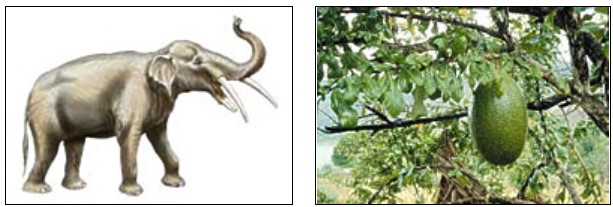It’s tempting to look for adaptive explanations for everything, from the shape of a flower petal, to the way your dog turns in a circle before it lies down to sleep, to your neighbor’s strawberry blond hair. We could make up adaptive explanations, but there are other explanations to consider. The trait might be any one of the following non-adaptations:
- A chance result of history.
Why does the base sequence GGC code for the amino acid glycine in a protein, as opposed to some other amino acid? Because that’s the way it happened to start out — and that’s the way we inherited it from our common ancestor. There is nothing special about the relationship between GGC and glycine. It’s just a historical accident that stuck around. - A by-product of another characteristic.
Why is blood red? Well, it’s not because mammals with red blood manage to survive better than mammals with yellow blood. Blood’s redness is a by-product of its chemistry, which causes it to reflect red light. The chemistry of blood may be an adaptation, but its redness is not itself an adaptation. - An outdated adaptation.
Some traits were adaptations for past environments but not the current one. For example, scientists have hypothesized that the large, hard-shelled fruit of the calabash tree (a native of Central and South America and the Caribbean) was actually an adaptation for seed distribution by large mammals, such as the gomphothere. Unfortunately, gomphotheres went extinct over 10,000 years ago! If the hypothesis is correct, these fruit characteristics were once adaptations for seed distribution but are no longer.
Left, an artist’s representation of a gomphothere (extinct). Right, a modern-day calabash fruit. Gomphothere picture courtesy of the Florida Museum of Natural History; Calabash fruit photo courtesy of Sara Herbert, Virginia Commonwealth University. - An exaptation.
An exaptation is a feature that performs a function but that was not produced by natural selection for its current use. Perhaps the feature was produced by natural selection for a function other than the one it currently performs and was then co-opted for its current function. For example, feathers might have originally arisen in the context of selection for insulation, and only later were they co-opted for flight. In this case, the general form of feathers is an adaptation for insulation and an exaptation for flight.
- The result of genetic drift.
Some genetic variation present in populations does not affect fitness one way or another. For example, some humans might have the base “A” at a particular point in the genome, but other humans might have the base “G” at that point. If this difference does not affect their survival and reproduction one way or the other, then the variants are not adaptations; they are simply neutral variation that is maintained by mutation and genetic drift. The suggestion that much genetic variation might actually be neutral and non-adaptive inspired the idea known as the neutral theory.
